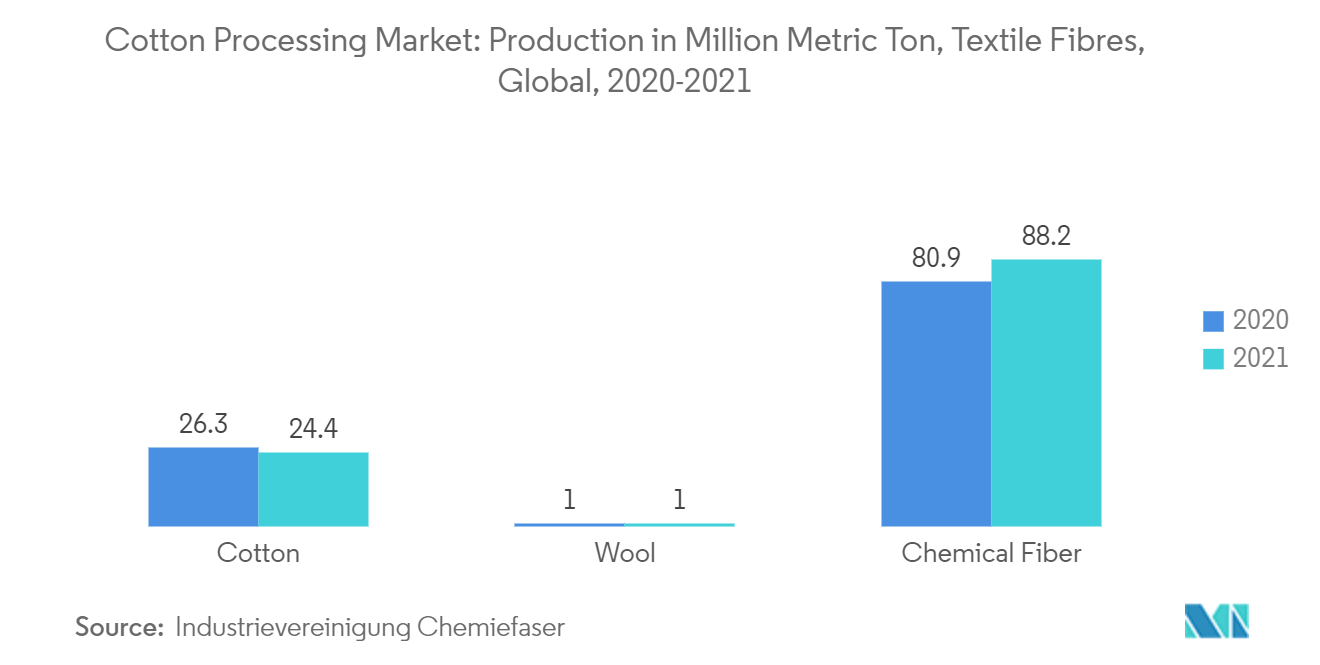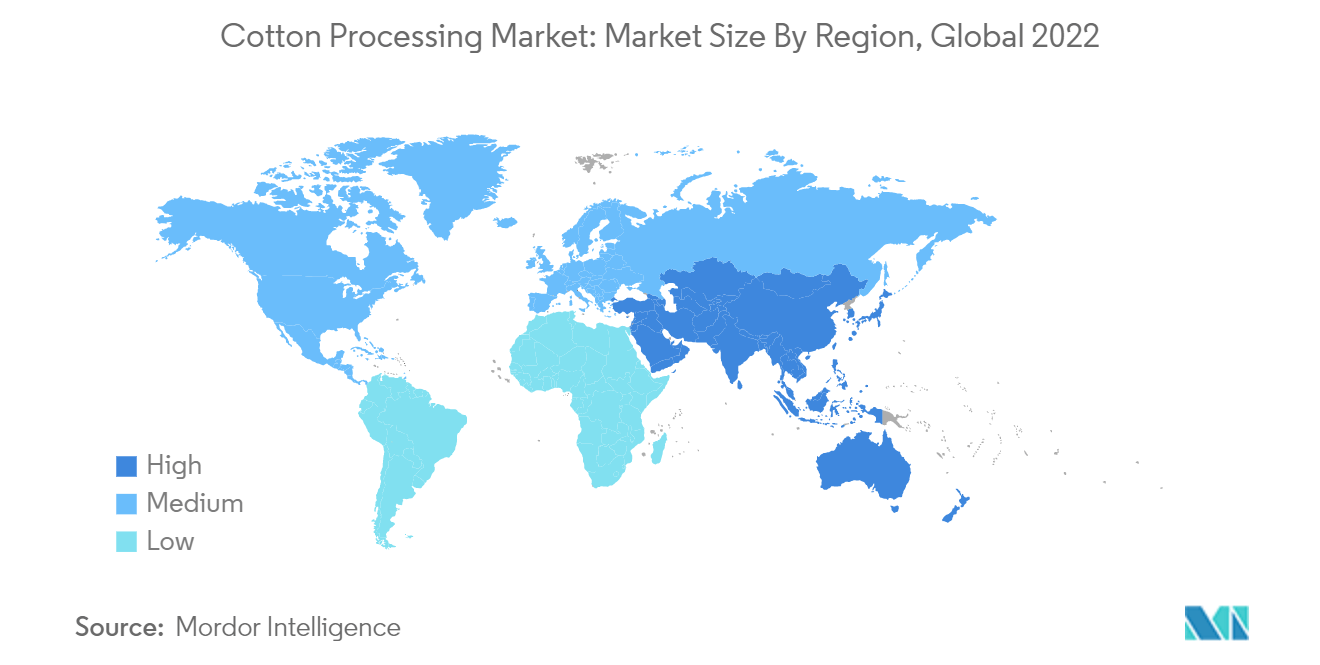Market Trends of Cotton Processing Industry
This section covers the major market trends shaping the Cotton Processing Market according to our research experts:
Increasing Textile Production is Driving the Market
Cotton is grown in subtropical and seasonally dry tropical areas in both the northern and southern hemispheres, although most of the world's production takes place north of the equator. The main producing countries are India, China, the United States, Brazil, and Pakistan. Together, these countries account for more than 75% of global production. According to Chemical Fiber Industry Association, global cotton production slightly declined in 2021 with 24.4 million metric ton compared to last year due to the pandemic effect all over the world. India accounting for more than 40% of the global increase. Synthetic fibers are preferably used more than natural fibers because they are more durable and elastic. Synthetic fibers are stronger, softer, and cheaper as compared to natural fibers which are increasing demand and growth of the market in coming years.
In India, Government is promoting organic farming under the schemes viz., Parampragat Krishi Vikas Yojana (PKVY) and Mission Organic Value Chain Development for Northeastern Region (MOVCDNER). Both schemes provide end-to-end support for organic farmers from organic production to certification and marketing including post-harvest management support like processing, packaging, storage, etc. This will make the country grow in the coming years.
Based on consumer interest, organic cotton fiber is used in everything from personal care items like sanitary products, make-up removal pads, cotton puffs, ear swabs), to fabrics, home furnishings like towels, bathrobes, sheets, blankets, bedding, mattresses), children's products, and apparel of all kinds and styles.
In recent years, the production of textiles for both apparel and non-apparel use has increased globally. The textile industry is also a major sector of the global economy, employing hundreds of millions around the world, and thus, it is driven by an increasing global population. Textiles used in automobiles are generally non-apparels broadly used in cars, buses, and trains, and the market is also experiencing good growth owing to the flourishing automobile production and rapid industrialization in emerging nations across the world. The emerging textile markets worldwide rely on the cotton processing market for raw materials, which is driving the market, globally.
The cotton lint segment experiences the highest demand from the textile industry. The rise in urbanization and change in the lifestyle of consumers has led to an increase in the demand for textiles, which, in turn, is projected to drive the growth of the lint segment further. Additionally, the growing awareness about product quality among consumers is projected to reflect positively on the growth of the cotton processing market in the coming years.

Asia Pacific Leads the Cotton Processing Market
Asia Pacific dominates the current cotton processing market, which is also estimated to lead the market in the forecast period. Some factors influencing this dominance in the market include the rising textile industry, consumer goods, and animal feed in countries, like China, India, Bangladesh, and Pakistan. In addition, approximately two-thirds of cottonseed is used for animal feed, and cottonseed oil is used in a variety of food products, including cookies and chips. The countries in the region have favorable climatic conditions for cotton production.
According to the USDA (United States Department of Agriculture), China and India are the top two users of raw cotton. However, China is the world's leader in processing raw cotton fiber into textiles and apparel because of favorable government policy and the industry has kept consumption below its peak and accounts for one-third of global cotton mill use. India's cotton consumption is second globally, accounting for about 20 percent of the total, while Pakistan contributes another 9 percent; however, both countries' share remains relatively stable. In contrast, upward trends in cotton consumption have occurred in Bangladesh and Vietnam, where companies are shifting their manufacturing to countries with relatively cheap labor, thereby increasing their demand for and consumption of raw cotton fiber.This encourages cotton processors to invest in the cotton processing market in the region.
Additionally, the rising incidents of chronic diseases and accidents and increasing awareness and hygiene concerns among consumers have given rise to the consumption of processed cotton in hospitals and medical use. Moreover, technological advancements to increase productivity are propelling the market further.


